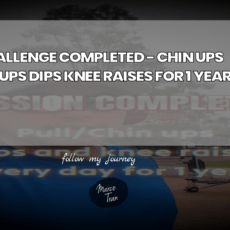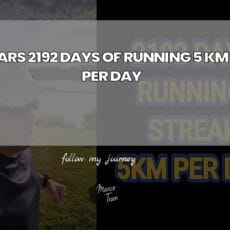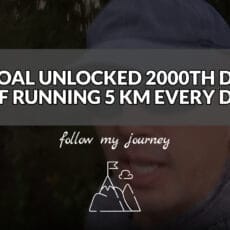I’ve been testing a new running belt that uses a clip fastening rather than my usual Velcro. At first glance, it’s a tidy, practical piece of kit with a few thoughtful features: a main zipped pocket large enough for a modern smartphone, a smaller pouch that looks ideal for keys, and a water bottle holster with zips at the top and bottom to tweak capacity. On paper, it ticks a lot of boxes. But as with any running accessory, the devil is in the details—fit, bounce, access, and comfort all matter far more than a spec sheet. Below, I’ll walk through each element, what I noticed, and how it feels on the move, and I’ll share tips from years of trial and error with different belts.
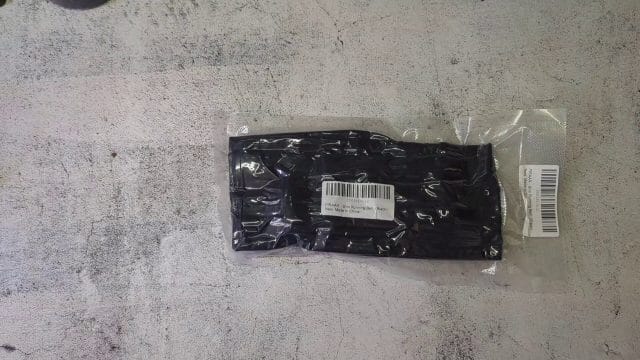
Clip vs Velcro: What’s Best Around Your Waist?
This belt secures with a clip, whereas I normally prefer Velcro. If you’ve run with both types, you’ll know why the closure system really matters. Velcro typically offers micro-adjustability—because you can stick it anywhere along the compatible surface, you can fine-tune tension more precisely. That tight, tailored fit often translates to less bounce, especially when you’re carrying a phone or water. Velcro also has a bit of give that conforms to the body as you move, and if the belt is made from elasticated fabric, Velcro can keep everything snug without cutting in.
Clips, on the other hand, are simple and robust. They’re usually quicker to fasten, they don’t wear out in quite the same way Velcro can after repeated washes, and they’re less likely to degrade from fluff sticking in the hook-and-loop. But clips tend to rely on fixed slots or slider adjustments for sizing. If the buckle or strap loosens as you run, bounce can creep in, especially if you’re carrying heavier items. Clip buckles also sit proud and can rub if the belt isn’t positioned just right. In cold or wet conditions, clips are reliable, but some runners find the minute adjustments a bit fiddly mid-run compared to a quick Velcro tighten.
Ultimately, your body shape, preferred position (low on the hips vs higher around the waist), and load will determine which closure feels more stable. My personal experience tilts towards Velcro for everyday runs because the tighter, more forgiving fit reduces movement. With this clip belt, the first impression was that it felt a touch loose when fully fastened—more on that later.
Fit, Bounce, and Stability: Small Tweaks, Big Differences
Bounce is the nemesis of any running belt. It distracts you, rubs your skin, and can throw off your rhythm. A belt’s stability is influenced by several factors:
- Width and elasticity of the strap: Wider, slightly stretchy straps distribute pressure better and grip more surface area, which reduces sliding.
- Closure position: A front buckle can press against the abdomen, while a side or back closure can minimise rubbing—but can also complicate mid-run adjustments.
- Load distribution: A heavy phone or water bottle should sit close to the body’s centre of mass (usually low and central) to reduce sway.
- Material friction: Fabrics that grip (without chafing) help keep the belt planted. Smooth, slick materials can migrate as you sweat.
With this belt, I noticed a touch of movement at the side, which often points to the strap not cinching tightly enough or the holster introducing asymmetrical weight. If you feel bounce on one side, try rotating the belt so the bottle sits in your small of the back, then tighten and test again—lower on the hips with the strap on the pelvic shelf can help, as can placing the phone centrally. Sometimes the most effective fix is a tiny adjustment to tension combined with a small repositioning angle.
Storage and Layout: Pockets That Actually Work
One thing this belt gets right is pocket design. There’s a main zipped compartment that fits a mobile comfortably—specifically, I tested with a Google Pixel 7 Pro, which is not a small handset. That tells you the pocket is sensibly sized for modern phones, even with a protective case. The zip runs cleanly and the pocket sits flat against the body, so you don’t end up with a bulge knocking your hip bones each step. There’s also a smaller pouch, just the right size for keys, bank cards, or a gel. In practice, separating metal keys from your phone avoids scuffs and rattling, and it’s a small but vital detail.
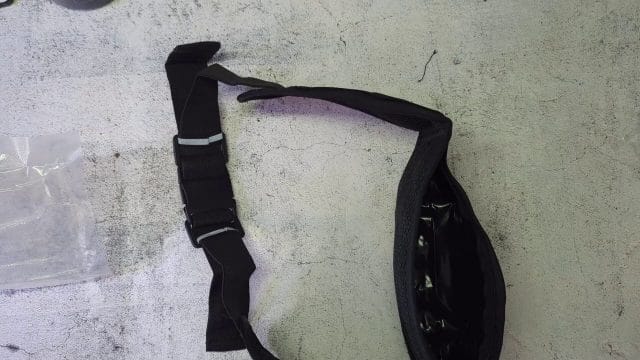
Main Zipped Pocket: Phone Carry Without the Hassle
A phone pocket should do two things: hold the device securely and make it accessible when needed. The pocket here succeeds on size, easily accommodating the Pixel 7 Pro. A snug fit is important—too tight and you’ll wrestle with it mid-run, too loose and it will pendulum. This pocket strikes a workable balance, with enough give to retrieve the phone without forcing the zip against the screen. While it “seems” waterproof, it’s wise to clarify terms: water-resistant material will repel light drizzle and sweat, but heavy rain or full submersion is a different story.
Runners who stream music or depend on route guidance should also consider cable management (if you use wired headphones), but nowadays, most people opt for Bluetooth earbuds. In that case, simply ensure the phone sits screen-inwards to protect it and reduce moisture exposure. If you run in the rain often, a simple resealable plastic bag inside the pocket provides belt-and-braces water protection without adding bulk.
Secondary Pouch for Keys: Small But Essential
The smaller pouch looks purpose-built for keys and small essentials. That matters more than you’d think—mixing metal keys with a phone can lead to scratched screens, and the jingle is surprisingly distracting. If you often carry a fob or car key, a micro carabiner or key silencer (a little neoprene sleeve) can stop movement entirely. Some belts include an internal hook to clip keys to; if yours doesn’t, tuck keys deep into the pouch and add a tiny elastic band around them to keep them compact. This simple step cuts noise, reduces bounce, and keeps the contents from migrating around the pocket.
Water Bottle Holster: Expandable Depth with Dual Zips
The bottle holster is a standout feature. It has zips at both the top and bottom, allowing the compartment to expand and accommodate a deeper bottle. This is a smart idea for versatility. If you prefer a smaller, squat bottle for shorter runs, you can keep the holster compact. For longer sessions, expand it to fit a taller flask. An expandable holster also helps hold different shapes more securely—some running bottles are contoured or angled, and depth adjustment reduces wobble.
The caveat is weight distribution. Bottles add mass, and any movement translates into bounce, particularly if the holster sits off-centre. Angled holsters that position the bottle diagonally towards the hip are often more stable than strictly vertical designs because they lower the centre of gravity against the belt. If your holster allows, try orienting the bottle so its base tucks in and the top leans slightly outward; the body’s natural movement can then press it in, rather than jostle it out.
Does It Run Well With a Bottle? Managing Movement
In testing, I noticed a bit of movement, especially when the holster carried a smaller bottle. Paradoxically, too light a bottle can wobble more because it doesn’t settle tightly into the holster. A soft flask, partially filled and then squeezed so it sits firm, can be an elegant solution because it conforms to the holster and the body, cutting down slosh and bounce. If your runs are under 10 km and you don’t need much fluid, consider a 250–300 ml bottle rather than 500–600 ml—the smaller volume reduces swing, and frequent sips maintain hydration.
If you’re buying a belt primarily for hydration, look for holsters with a retention strap or elastic keeper at the top. It’s a minor detail that makes a major difference on rough terrain. The base of the holster should be reinforced so it doesn’t sag; combined with thoughtful zip expansion, you get a versatile pouch that adapts to your training day. Remember, though, asymmetry matters: a single bottle on one side can tilt the belt. Central positioning (just off-centre at the back) usually minimises lateral sway.
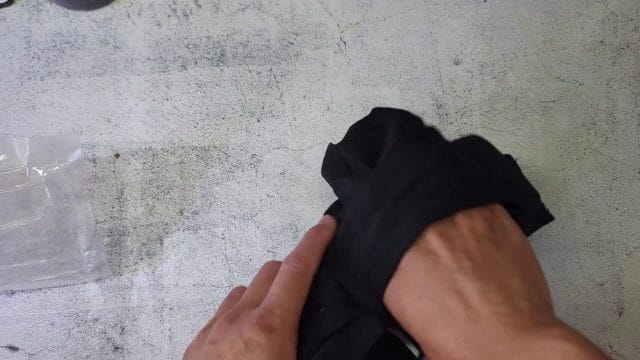
No Second Holster: Symmetry and Load Balance
This belt doesn’t have a second holster or zipper on the opposite side, so adding another bottle isn’t on the cards. For most runners, one bottle is plenty, especially if you plan your route with fountains or stash a backup bottle on a loop. If you regularly run long and need dual hydration, a belt with symmetrical holsters or a lightweight vest could be a better choice. Belts can handle a surprising amount of kit, but they’re at their best when load is minimal. Overloading a belt often leads to chafing, slipping, and that frustrating constant readjustment mid-run.
Material and Build Quality: Comfort You Can Trust
Material choice is key for a belt you’ll wear against sweaty skin. This one feels sturdy and reasonably soft to the touch—likely a blend of neoprene or lycra with a water-resistant finish. That’s a good combination: neoprene cushions and stabilises, lycra adds stretch, and a technical outer layer sheds light rain. Stitching should be flatlock or tidily finished to avoid seams digging in. When you press the belt against your hip bones, it should flex rather than bite. If the edges feel abrasive, they’ll rub over longer distances.
Look at the zip pulls: are they easy to grab with cold fingers? Do the zips glide without snagging? Good hardware (YKK, for instance) keeps pockets secure and is less likely to fail. Small details such as an elastic keeper to tuck away excess strap length, or a textured interior that grips clothing, can transform comfort. Reflective accents are another bonus for early morning or evening runs.
As for water resistance, remember it protects from external moisture, but sweat can still accumulate inside. Ventilation eyelets or breathable panels help reduce condensation. If your phone tends to fog inside a pocket, try placing a tiny desiccant packet in the compartment or choose a belt with a mesh rear panel to encourage airflow.
The Clip Fastening: A Bit Loose When Clipped—What to Do
When clipped, this belt felt a touch loose. That can happen for several reasons: the strap material might be slightly slick, the adjuster could be slipping under motion, or the buckle geometry may not bite into the strap firmly enough. Here are practical ways to improve it:
- Double-back the strap through the adjuster: Thread it once through, then back again to create friction. Many packs and belts rely on this climbing-inspired method to lock webbing.
- Add a silicone or elastic keeper: A small loop holds the spare tail and stops creeping.
- Wear it lower and tighter: Position the belt across the iliac crest (top of the hip bones). The bony shelf acts like a ledge and resists downward slip.
- Load central first: Put the phone in the centre pocket before adding the bottle. The central weight helps “set” the belt, then fine-tune tension.
- Layer over a technical top: Smooth fabrics can reduce friction. If chafing occurs, apply a little body glide on contact points.
If you prefer Velcro because of micro-adjustment, you may still be able to make a clip belt work by taking time to dial in position and tension. For some runners, the convenience and durability of a clip offset the slightly looser feel, especially if the belt is primarily for short runs or park laps where you can quickly tweak it between intervals.
Real-World Running Test: Movement, Access, and Rhythm
On the move, you notice what a product gets right and where it needs refinement. With this belt, I felt “a little bit of movement” on one side, especially with the water bottle holster in play. For many belts, that’s fixable: rotate the bottle towards the back, increase tension slightly, and ensure the bottle is firmly seated. If the holster’s zips allow expansion, experiment with the smallest size that fits your bottle; tighter holsters generally reduce wobble.
Access is good—the main zip sits where you can reach it without twisting, and the bottle position is intuitive. The smaller pouch for keys keeps them safely away from the phone. The material doesn’t feel abrasive, which is crucial for longer sessions when the small rubs become big problems. However, the clip’s slightly loose feel means occasional retightening may be necessary during a run, particularly as you warm up and fabric stretches subtly.
Running form matters here too. Bands and belts respond to your gait: heavy heel-striking can increase vertical oscillation and induce more bounce. If you transition to a smoother, midfoot strike and keep your torso stable, belts tend to behave better. That doesn’t mean you should change your stride for a belt—but it explains why some runners report no movement while others struggle. Body geometry, belt positioning, and weight carried all play a role.
Hydration Strategy: When a Bottle Belt Makes Sense
A belt with a single bottle holster makes sense for moderate distances and routes without frequent water sources. If you’re running 5–12 km in mild weather, one small bottle is often enough. Pair that with a central phone pocket and a key pouch, and you’ve got a compact, efficient setup. Beyond that range—or in heat—you may prefer a hydration vest or a handheld bottle to avoid overloading the belt.
Soft flasks are a compelling alternative. They shrink as you drink, reducing slosh and space. Many belts accommodate them well, and they’re comfortable against the body. If the holster’s top and bottom zips let you fine-tune the pocket size, soft flasks can be the most secure option, especially if you find rigid bottles wobble more than you like.
Comparing Belt Types: Clip Belt with Bottle vs Velcro Race Belt
Velcro race belts are often minimalist: slim profile, light fabric, just enough space for a phone and a couple of gels, and a fit that hugs the waist tightly. They excel in short to mid-distance runs where hydration is handled elsewhere. Clip belts, particularly those with bottle holsters, add capacity and versatility but can be slightly bulkier and, for some, more prone to movement.
Choose a clip belt with a bottle if:
- You want to carry fluid without wearing a vest or carrying a handheld.
- You value quick on-off convenience and durability over micro-adjustment.
- Your runs are varied and you want a belt that adapts to different bottles.
Choose a Velcro belt if:
- You prioritise a snug, bounce-free fit with minimal kit.
- You seldom carry water and prefer the lowest profile possible.
- You want fast, fine tension adjustments mid-run.
There’s also a hybrid class: belts with elastic loops for gels, race number toggles, and one or two zip pockets. If racing is your main focus, those thoughtful features can be more valuable than a bottle holster. But for training, especially trail or park runs, a simple bottle-carrying clip belt can be exactly what you need.
Practical Tips: Getting the Most From Any Running Belt
Whatever belt you choose, small tweaks maximise comfort and utility. Here’s what works:
- Positioning: Start low on the hips, centred at the back. Gradually rotate and tighten until bounce disappears.
- Load order: Put the phone in first, then keys, then the bottle. Re-adjust after each addition.
- Pocket discipline: Keep keys separate. Use a small zip-lock bag or neoprene sleeve to stop rattle.
- Bottle choice: Try a soft flask for low wobble. If using a rigid bottle, pick one that fits the holster snugly.
- Strap management: Double back the strap through adjusters, and use an elastic keeper to secure the tail.
- Layering: Wear the belt over a technical top to increase comfort and reduce chafing.
- Reflectivity: If you run pre-dawn or dusk, ensure the belt has reflective accents or add a clip-on light.
- Weather plan: Use a simple plastic sleeve for the phone in heavy rain; don’t rely solely on “waterproof” claims.
- Test before long runs: Do a 1–2 km shakedown with your planned load. Adjust and repeat until it feels natural.
Care and Maintenance: Keep It Fresh and Functional
Running belts live in a sweaty, salty environment, and care matters for longevity. Rinse the belt after hot runs to remove sweat that can degrade elastic and fabric finishes. Hand-wash with mild detergent, then air-dry flat away from direct sunlight. Avoid tumble drying, which can warp plastic clips and fatigue elastic fibres. Wipe down zips occasionally and, if they’re exposed to grit or salt, give them a quick brush to prevent sticking.
Inspect stitching around high-stress points, especially the bottle holster and pocket corners. If you notice a thread loosening, a quick dab of flexible fabric glue or a reinforcing stitch can prevent bigger failures. Keep the belt in a cool, dry place; trapped moisture can lead to odours and mildew over time. If smells linger, soak the belt in a solution of water and white vinegar (1:4 ratio), then rinse thoroughly and air-dry.
What the Screenshots Show and Why They Matter
The snapshots of the belt highlight three key areas: the overall form and clip, the large phone pocket and material texture, and the bottle holster with its dual zips. These are the features you’ll interact with on every run, and they reveal the design intent—versatility, accessible storage, and hydration without a vest. Capturing how the fabric sits and how the bottle holster expands helps you judge whether it suits your carry style, especially if you run with a larger phone like the Pixel 7 Pro.



Final Thoughts: Do I Like It?
So, do I like this new running belt? In many ways, yes. The storage layout is practical: a main zipped pocket that comfortably fits a Pixel 7 Pro, a smaller pouch for keys to prevent scratching and rattling, and a bottle holster with thoughtful zips to expand for different flasks. The material feels decent—soft enough for comfort, robust enough for regular use, and seemingly water-resistant. On the move, access is straightforward and the belt sits well against the body.
Where I hesitate is the closure. Compared to Velcro, the clip felt a little loose for me, even when fully fastened. It’s not a deal-breaker—there are ways to mitigate it—but my personal preference remains with Velcro for that ultra-snug, bounce-free fit. The single bottle holster is fine for most runs, but the asymmetry means a bit more diligence in positioning and tightening. If you value hydration and want a belt that adapts to different bottle sizes, this design makes sense. If your priority is absolute stability for speed work or minimalist carrying, a Velcro belt might suit you better.
In short, this clip belt offers a smart combination of storage and hydration with a few caveats. Take time to dial in the fit, experiment with bottle types and holster expansion, and keep the load balanced. With those tweaks, it’s a solid option for everyday training and mixed-distance runs. As ever, the “best” belt is the one that disappears while you’re moving—carry what you need, forget the rest, and let your run be the star.

If this article helped you in any way and you want to show your appreciation, I am more than happy to receive donations through PayPal. This will help me maintain and improve this website so I can help more people out there. Thank you for your help.

